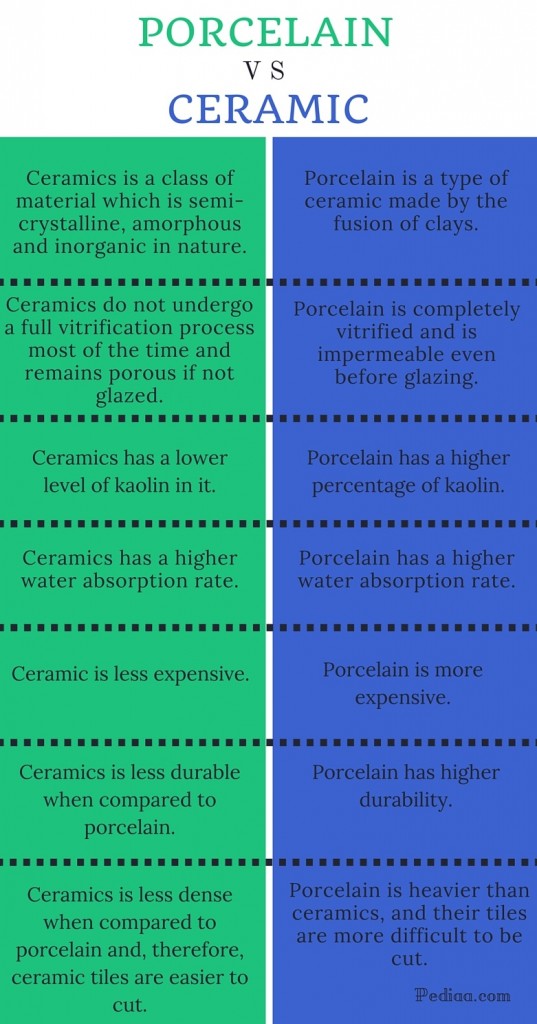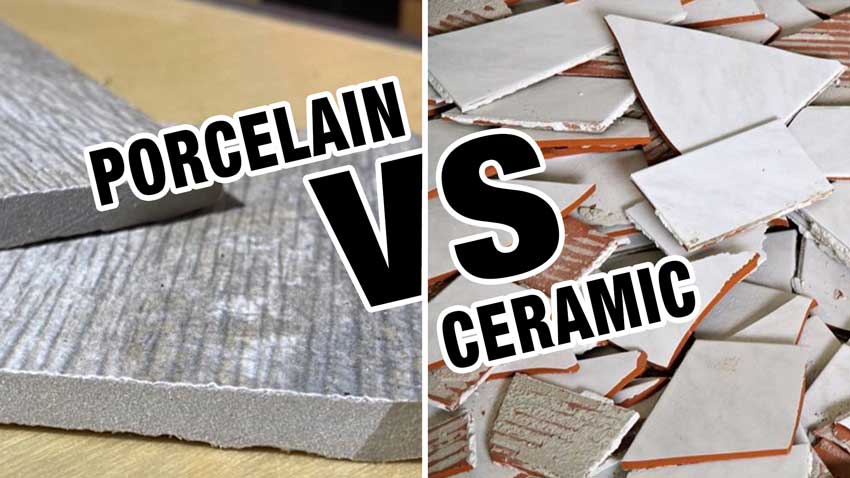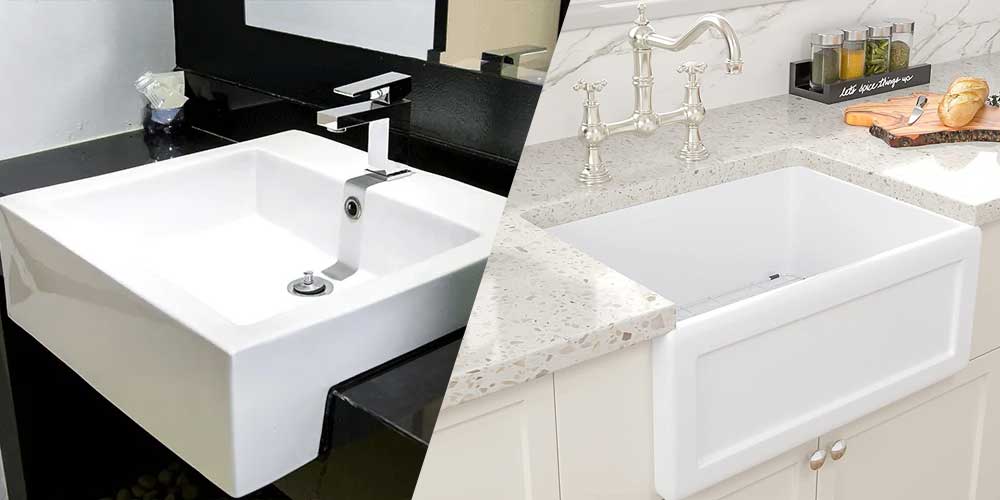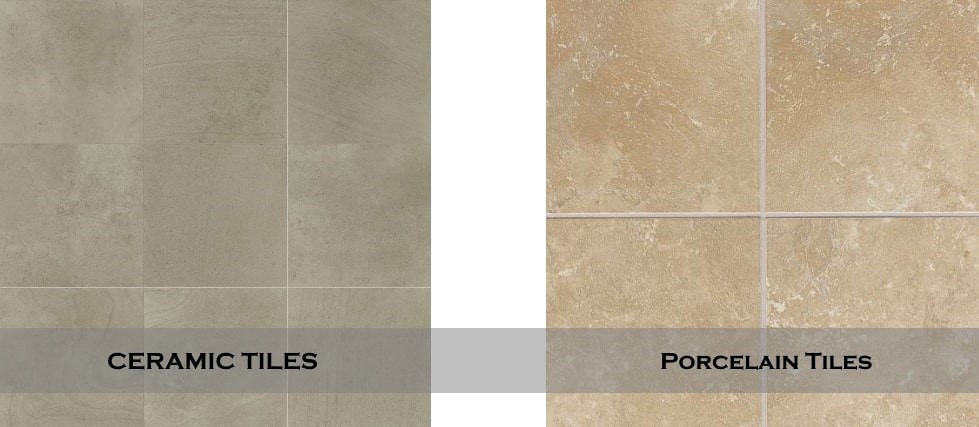When it comes to choosing a sink for your kitchen, there are a lot of options to consider. Two popular choices are porcelain and ceramic sinks. While these two materials may seem similar, there are some key differences that you should be aware of before making your decision. In this article, we'll break down the top 10 main differences between kitchen porcelain and ceramic sinks to help you make the best choice for your home.Porcelain vs Ceramic Sinks: What's the Difference?
The first thing to consider when choosing between porcelain and ceramic sinks is your personal preference. Both materials have their own unique look and feel, so it's important to decide which one appeals to you more. Porcelain sinks have a smooth, glossy finish and are available in a variety of colors. Ceramic sinks, on the other hand, have a more matte finish and are typically white or off-white in color.Porcelain vs Ceramic Sinks: Which One is Right for You?
To help you weigh your options, let's take a look at the pros and cons of each material. Porcelain sinks are known for their durability and resistance to scratches and stains. They are also easy to clean and maintain. However, they can be more expensive than ceramic sinks and may chip or crack if something heavy is dropped on them. Ceramic sinks are affordable and lightweight, making them easier to install. However, they are more prone to scratches and chips and may stain if not properly cared for.Porcelain vs Ceramic Sinks: Pros and Cons
The main difference between porcelain and ceramic sinks lies in the materials used to make them. Porcelain sinks are made from a mixture of clay and other minerals, which is then fired at a very high temperature. This process creates a hard, durable material that is resistant to heat, scratches, and stains. Ceramic sinks, on the other hand, are made from a mixture of clay, minerals, and water, and are fired at a lower temperature. This results in a slightly softer material that is more prone to damage.What is the Difference Between Porcelain and Ceramic Sinks?
As mentioned earlier, porcelain sinks are known for their durability. Due to the high temperature at which they are fired, they are less likely to chip, scratch, or stain. This makes them a great choice for high-traffic kitchens or households with children. However, if you're looking for a more budget-friendly option, ceramic sinks can still be a durable choice if properly cared for.Porcelain vs Ceramic Sinks: Which is More Durable?
Cleaning a sink is an important task in any kitchen. Fortunately, both porcelain and ceramic sinks are relatively easy to clean. Porcelain sinks have a smooth, non-porous surface that is resistant to stains, making them easy to wipe down with soap and water. Ceramic sinks may require a little more effort as their surface can be more prone to staining, but they can still be easily cleaned with the right products.Porcelain vs Ceramic Sinks: Which is Easier to Clean?
If budget is a major factor in your decision, ceramic sinks may be the way to go. They are typically more affordable than porcelain sinks due to the difference in materials and production processes. However, keep in mind that porcelain sinks may be more cost-effective in the long run due to their durability and resistance to damage.Porcelain vs Ceramic Sinks: Which is More Affordable?
Stains can be a major concern when it comes to sinks, especially in a kitchen where spills and messes are common. As mentioned earlier, porcelain sinks have a smooth, non-porous surface that is resistant to stains. This makes them a great choice for households with messy cooks or young children. Ceramic sinks, while not as resistant to stains, can still be kept clean and stain-free with proper care and maintenance.Porcelain vs Ceramic Sinks: Which is More Stain Resistant?
If you're worried about scratches on your sink, porcelain may be the better choice for you. Due to the high temperatures they are fired at, porcelain sinks are less likely to scratch or chip. Ceramic sinks, on the other hand, can be more prone to scratches and may show signs of wear and tear over time. However, with proper care, both materials can remain scratch-free for many years.Porcelain vs Ceramic Sinks: Which is More Scratch Resistant?
When it comes to heat resistance, porcelain sinks have the upper hand. They can withstand high temperatures without cracking or staining, making them a great choice for busy kitchens where hot pots and pans are common. Ceramic sinks, while still relatively heat-resistant, may be more prone to damage from extreme temperatures. In conclusion, when choosing between kitchen porcelain and ceramic sinks, it's important to consider your personal preferences, budget, and the level of durability and maintenance you require. Both materials have their own unique qualities, so it's ultimately up to you to decide which one is the right fit for your home.Porcelain vs Ceramic Sinks: Which is More Heat Resistant?
The Main Differences Between Kitchen Porcelain and Ceramic Sinks

Introduction
 When it comes to designing your dream kitchen, every detail matters. From the cabinets to the countertops, each element plays a crucial role in creating a functional and stylish space. One decision that many homeowners struggle with is choosing between a porcelain or ceramic sink. While both may look similar, there are significant differences between the two that can impact your daily use and overall kitchen design. In this article, we will dive into the main differences between kitchen porcelain and ceramic sinks and help you decide which one is best for your home.
When it comes to designing your dream kitchen, every detail matters. From the cabinets to the countertops, each element plays a crucial role in creating a functional and stylish space. One decision that many homeowners struggle with is choosing between a porcelain or ceramic sink. While both may look similar, there are significant differences between the two that can impact your daily use and overall kitchen design. In this article, we will dive into the main differences between kitchen porcelain and ceramic sinks and help you decide which one is best for your home.
Materials and Durability
 Porcelain sinks
are made from a type of ceramic material that is heated at a higher temperature, making it more durable and less porous than ceramic sinks. This means that porcelain sinks are less likely to chip, scratch, or stain, making them a popular choice for high-traffic kitchens. They are also resistant to extreme temperatures and are less likely to crack or discolor over time.
On the other hand,
ceramic sinks
are made from a blend of materials, including clay and minerals, and are fired at a lower temperature than porcelain sinks. This makes them more prone to chips, scratches, and stains. However, they are still a durable option for kitchens and can withstand daily use with proper care.
Porcelain sinks
are made from a type of ceramic material that is heated at a higher temperature, making it more durable and less porous than ceramic sinks. This means that porcelain sinks are less likely to chip, scratch, or stain, making them a popular choice for high-traffic kitchens. They are also resistant to extreme temperatures and are less likely to crack or discolor over time.
On the other hand,
ceramic sinks
are made from a blend of materials, including clay and minerals, and are fired at a lower temperature than porcelain sinks. This makes them more prone to chips, scratches, and stains. However, they are still a durable option for kitchens and can withstand daily use with proper care.
Design and Style
 When it comes to design and style, both porcelain and ceramic sinks offer a wide range of options to choose from. However, porcelain sinks tend to have a more elegant and refined look, with a smooth and glossy finish. They are available in a variety of colors and can be customized to fit different kitchen styles.
Ceramic sinks, on the other hand, have a more rustic and traditional feel, with a matte finish and a more textured surface. They are also available in a range of colors and can add a charming touch to farmhouse or cottage-style kitchens.
When it comes to design and style, both porcelain and ceramic sinks offer a wide range of options to choose from. However, porcelain sinks tend to have a more elegant and refined look, with a smooth and glossy finish. They are available in a variety of colors and can be customized to fit different kitchen styles.
Ceramic sinks, on the other hand, have a more rustic and traditional feel, with a matte finish and a more textured surface. They are also available in a range of colors and can add a charming touch to farmhouse or cottage-style kitchens.
Cost and Maintenance
 In terms of cost, porcelain sinks tend to be more expensive than ceramic sinks due to their higher durability and elegant design. However, both options are relatively affordable compared to other sink materials such as stainless steel or granite.
When it comes to maintenance, porcelain sinks are easier to clean and maintain due to their non-porous surface. They can be easily wiped down with a mild soap and water, making them a popular choice for busy kitchens. Ceramic sinks, on the other hand, may require more frequent cleaning and may need to be sealed periodically to prevent staining.
In terms of cost, porcelain sinks tend to be more expensive than ceramic sinks due to their higher durability and elegant design. However, both options are relatively affordable compared to other sink materials such as stainless steel or granite.
When it comes to maintenance, porcelain sinks are easier to clean and maintain due to their non-porous surface. They can be easily wiped down with a mild soap and water, making them a popular choice for busy kitchens. Ceramic sinks, on the other hand, may require more frequent cleaning and may need to be sealed periodically to prevent staining.
Conclusion
 Both kitchen porcelain and ceramic sinks have their own unique benefits and can add a touch of style and functionality to your kitchen. While porcelain sinks are more durable and elegant, ceramic sinks offer a more rustic and affordable option. Consider your kitchen's needs and your personal style before making a decision, and don't be afraid to mix and match materials for a unique and customized look.
Both kitchen porcelain and ceramic sinks have their own unique benefits and can add a touch of style and functionality to your kitchen. While porcelain sinks are more durable and elegant, ceramic sinks offer a more rustic and affordable option. Consider your kitchen's needs and your personal style before making a decision, and don't be afraid to mix and match materials for a unique and customized look.



:max_bytes(150000):strip_icc()/porcelain-tile-vs-ceramic-tile-1822583-FINAL-5b1ab0f043a1030036a6e6cc.png)
















:max_bytes(150000):strip_icc()/bathroom-ceramic-tile-vs-vinyl-plank-1822815-FINAL-5bae841646e0fb002670b7c6-2e9bc35535b84e82999f7aa4dc052ff2.png)




























